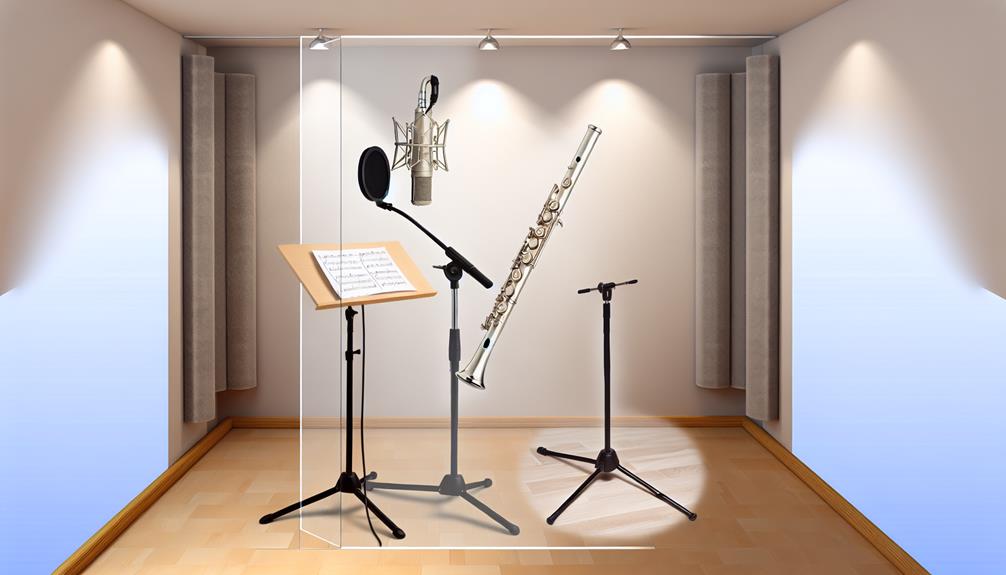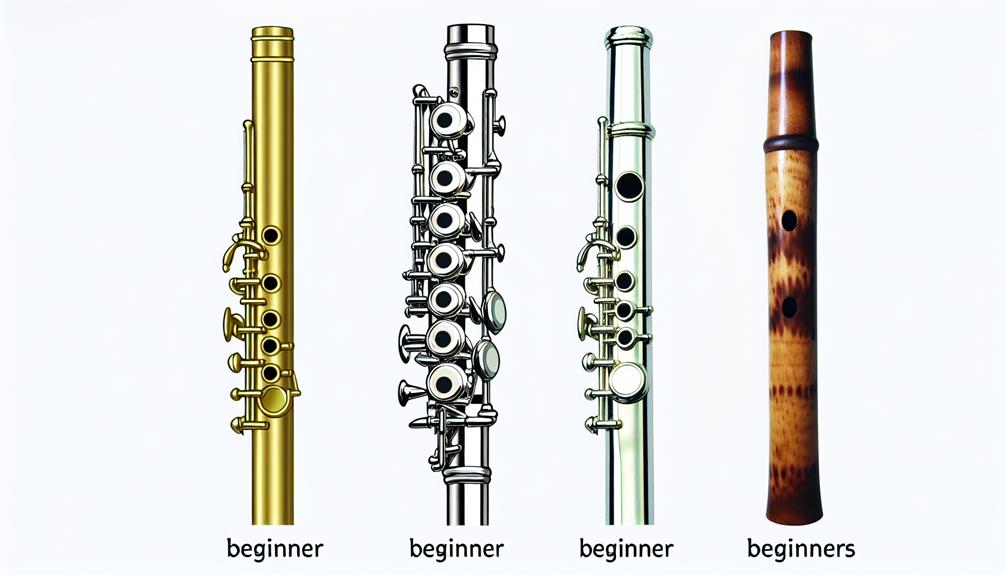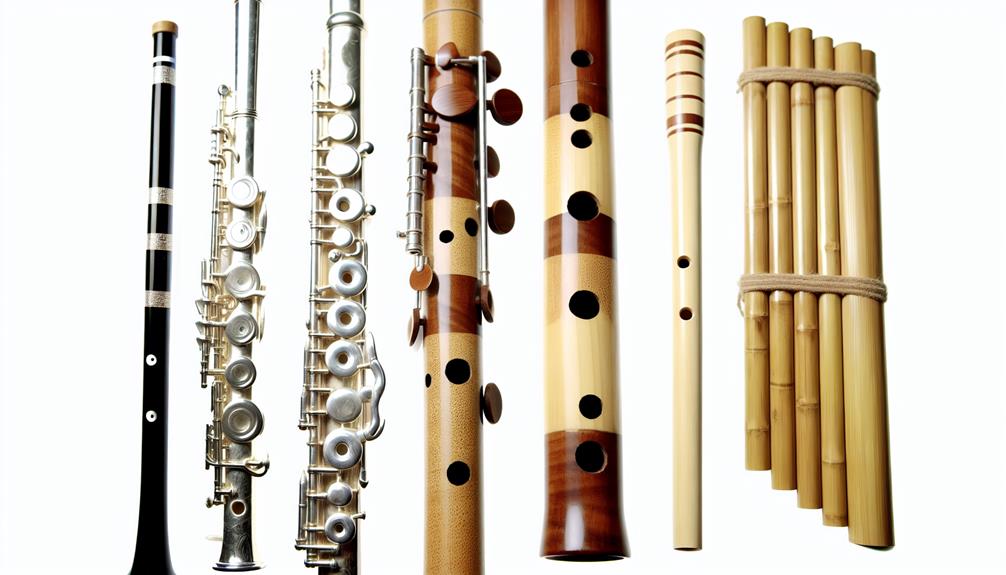The flute is often considered one of the most challenging instruments to master. It presents a unique set of obstacles that set it apart from other musical instruments. From the intricate fingerings required for each note to the demanding embouchure technique needed to produce a clear sound, aspiring flutists are faced with a multitude of challenges.
Furthermore, the instrument's breath control demands and the necessity for precise intonation and mastery of an extended range add layers of complexity that contribute to its reputation as a formidable instrument to conquer.
Key Takeaways
- Complex fingerings and hand coordination require precise movements and anticipation, making flute challenging to master.
- Demanding embouchure technique involves intricate control of lips and airflow, crucial for tone quality and dynamics.
- Breath control challenges include sustaining phrases and coordinating breath with articulation, essential for seamless melodies.
- Intonation precision and tuning demand meticulous attention to pitch control, adjustments, and techniques for better accuracy.
Complex Fingerings
Mastering the flute requires precise control over complex fingerings to produce the desired notes with accuracy and clarity. The flute is unique in its design, with a system of keys and holes that must be precisely covered or left open to create different pitches. Each finger must move independently to cover the appropriate holes while maintaining proper hand position and posture. This level of coordination can be challenging for beginners, requiring patience and practice to develop muscle memory and agility.
Flutists must also be mindful of their hand position and finger placement to avoid accidentally covering adjacent holes, which could result in incorrect notes or disruptions in the sound. Additionally, the spacing between the keys on the flute requires fine motor skills to navigate smoothly. As flutists progress, they learn to anticipate finger movements for rapid passages and intricate melodies, further enhancing their control and precision over the instrument. Ultimately, mastering the flute's complex fingerings is a foundational step towards becoming a proficient and expressive flutist.
Demanding Embouchure Technique
Developing a proficient flute technique involves mastering the demanding embouchure required to produce clear and resonant tones. The embouchure refers to the position and shape of the lips, jaw, and facial muscles when playing the flute. Achieving a strong and flexible embouchure is essential for producing a full range of notes with precision and control.
Players must develop the strength and endurance of the muscles around the mouth and lips to maintain consistent sound production throughout long practice sessions and performances. The embouchure also plays a crucial role in shaping the tone quality and dynamics of the music being performed. It requires a delicate balance of pressure, angle, and airflow to create a beautiful sound that carries well in various musical contexts.
Additionally, mastering the embouchure technique involves understanding how subtle adjustments can affect intonation and articulation. Players must continuously refine their embouchure to adapt to different musical styles and technical demands. Overall, the demanding embouchure technique is a fundamental aspect of flute playing that requires dedication, practice, and a keen ear for sound production.
Breath Control Challenges
When tackling the flute, one of the significant hurdles that players face is mastering breath control to achieve consistent and controlled musical phrasing. This challenge goes beyond simply blowing air into the instrument; it requires finesse, control, and understanding of how breath impacts tone production.
Here are three key breath control challenges that flute players often encounter:
- Sustaining Long Phrases: Maintaining a steady stream of air for extended phrases without audible breaks or disruptions is essential for creating seamless melodies.
- Dynamic Control: Controlling the intensity of the airflow to produce dynamics ranging from pianissimo to fortissimo adds depth and emotion to the music but demands precise breath management.
- Articulation Precision: Coordinating breath with tongue movements for crisp articulation of notes is crucial for achieving clarity and articulation in fast passages.
Mastering these breath control challenges is pivotal for flute players to deliver expressive and captivating performances.
Intonation Precision
Achieving accurate intonation on the flute requires meticulous attention to pitch control and tuning adjustments, complementing the challenges of breath control for players striving to convey musical nuances effectively. Intonation precision is crucial as even the slightest deviation from the correct pitch can be glaringly noticeable due to the nature of the flute's sound. Flutists must develop a keen ear to recognize when they are playing sharp or flat and make real-time adjustments to maintain pitch accuracy.
Factors such as temperature, humidity, and the player's breath pressure can all affect intonation, making it a continuous balancing act during performances. Utilizing techniques like adjusting embouchure, air speed, and tone color can aid in achieving better intonation. Additionally, regular practice with a tuner and playing along with other musicians can help improve intonation skills. Ultimately, mastering intonation precision on the flute enhances the overall musicality and ensures a harmonious blend when playing in ensembles.
Extended Range Mastery
Mastering the extended range on the flute requires intricate control over fingerings, breath support, and embouchure adjustments to navigate the additional notes seamlessly.
- Perfecting Fingerings: Each note in the extended range has a specific fingering technique that must be executed precisely to produce clear and accurate sounds.
- Enhancing Breath Support: Playing in the extended range demands increased breath control to sustain the higher pitches and control dynamics effectively.
- Refining Embouchure Adjustments: Achieving mastery in the extended range involves subtle adjustments in lip and mouth positioning to produce a full, resonant tone across all registers.
These elements interplay to create a harmonious connection between the flutist and the instrument, allowing for a seamless transition between the standard and extended ranges. As flutists delve into the complexities of mastering the extended range, they embark on a journey that requires dedication, discipline, and a deep appreciation for the nuances of flute playing.
Frequently Asked Questions
What Are Some Common Misconceptions About Learning to Play the Flute?
When learning to play the flute, common misconceptions include the idea that it is an easy instrument to master due to its size or that it requires less effort than other instruments. Understanding the dedication needed is crucial.
How Does the Size and Material of a Flute Affect Its Sound and Playability?
The size and material of a flute significantly impact its sound and playability. A larger flute tends to produce a deeper, richer tone, while different materials, like silver or nickel, can influence the instrument's responsiveness and timbre.
Are There Any Specific Exercises or Techniques That Can Help Improve Finger Dexterity for Flute Players?
To enhance finger dexterity for flute players, exercises like scales, arpeggios, and chromatic patterns are beneficial. Incorporating finger strengthening exercises, regular practice, and focusing on proper hand positioning can lead to improved agility and precision while playing the flute.
How Does the Flute Compare to Other Woodwind Instruments in Terms of Difficulty?
In the realm of woodwind instruments, the flute showcases a unique blend of elegance and challenge. Its delicate embouchure demands precision, fingerings require agility, and mastering breath control is a formidable task compared to other woodwinds.
Can Playing the Flute Have Any Physical Health Benefits or Drawbacks for Musicians?
Playing the flute can have physical health benefits. It promotes proper breathing techniques, enhances lung capacity, and improves posture. However, prolonged practice without breaks may lead to muscle strain or overuse injuries. Proper technique and rest are essential.
Conclusion
In conclusion, the flute is renowned as the most challenging instrument due to its intricate fingerings, demanding embouchure technique, breath control challenges, intonation precision, and extended range mastery.
While many may struggle to master its complexities, those who persevere through the trials and tribulations of learning the flute are rewarded with a sense of accomplishment and mastery over one of the most elusive instruments in the musical world.
The flute truly separates the dedicated from the faint of heart.






